The anniversary of Easter coincides with two elements: the symbolic one of rebirth and the arrival of spring, which represents – it too – rebirth, the blossoming into the world after the silent underground seed growth that shelters from the cold of winter. Easter days can therefore be an opportunity to explore and renew new acquisitions. With its geographical and cultural variety, Emilia-Romagna can offer different scenarios and possibilities for curiosities in bloom. I propose some destinations among the many in this region, full of cities of art.
I begin in Romagna and then head north.
Easter in Ravenna
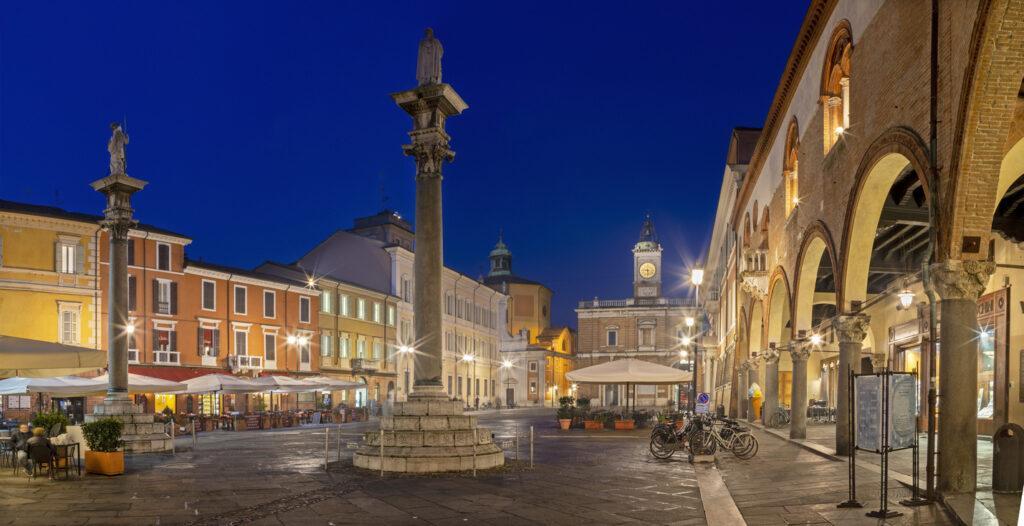
The City
Ravenna, with its mosaics and Byzantine atmosphere (the Cathedral, the Neonian Baptistery, the Archiepiscopal Museum, the fine Basilica of San Vitale – whose construction began in the time of the Goths), – is unique in the Italian cultural scene. Moreover, the supreme poet stayed here between 1318 and 1321: there is a museum and his tomb, and the town theatre is also dedicated to Dante. The Classe Pinewood, a few kilometres south of the city, is mentioned by Dante in the Purgatorio (“Tal qual di ramo in ramo si raccoglie / per la pineta in su ‘lito di Chiassi, / quando’Eolo scilocco fuor discioglie”). You can reach the sea on the beautiful cycle paths along the dock.
Read also:
The food
Lastly, you can enjoy the famous cappelletti – those from Romagna are with cheese -, passatelli (which look like fusilli – a kind of pasta -, but are made with eggs, cheese, grated stale bread and nutmeg), squacquerone – a soft cheese that resembles stracchino and is used in piadine, throughout Romagna).
Easter in Rimini
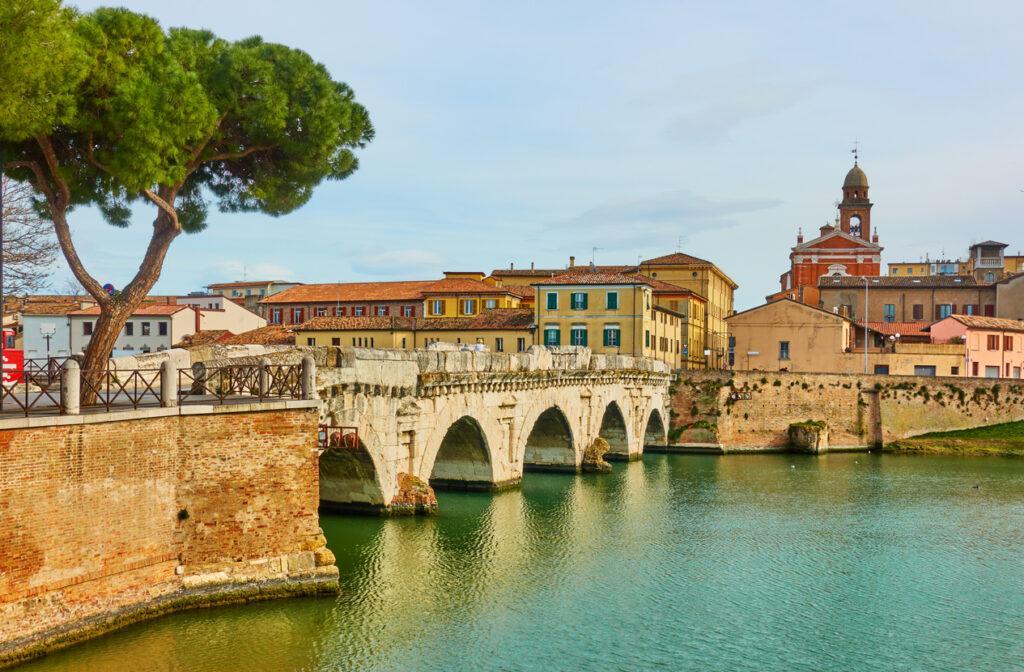
The City
And what about Rimini, with its beautiful Roman remains: the Amphitheatre, the Surgeon’s Domus, the Arch of Augustus? The city of Ariminum was founded in 268 BC. Film buffs should note the homage to its most illustrious citizen, Federico Fellini. You can visit the Grand Hotel, where he used to stay, the park dedicated to him, but also the Fulgor Cinema, where the director used to go to the cinema as a child, or the murals that decorate the pastel houses of his beloved Borgo San Giuliano, the fishermen’s village. And then here, too, you can find hospitality and excellent food.
The food
Typical are the tagliolini alle vongole (noodles with clams), the ravioli stuffed with herbs, the rustida – mixed grill of fish – and the cockerel on the spit. We recommend a trip to the Rimini hills, with the splendid Santarcangelo di Romagna, the birthplace of Tonino Guerra and home to the longest-running performing arts festival in Italy, which has taken place in July for over fifty years.
Read also:
Easter Monday in Ferrara
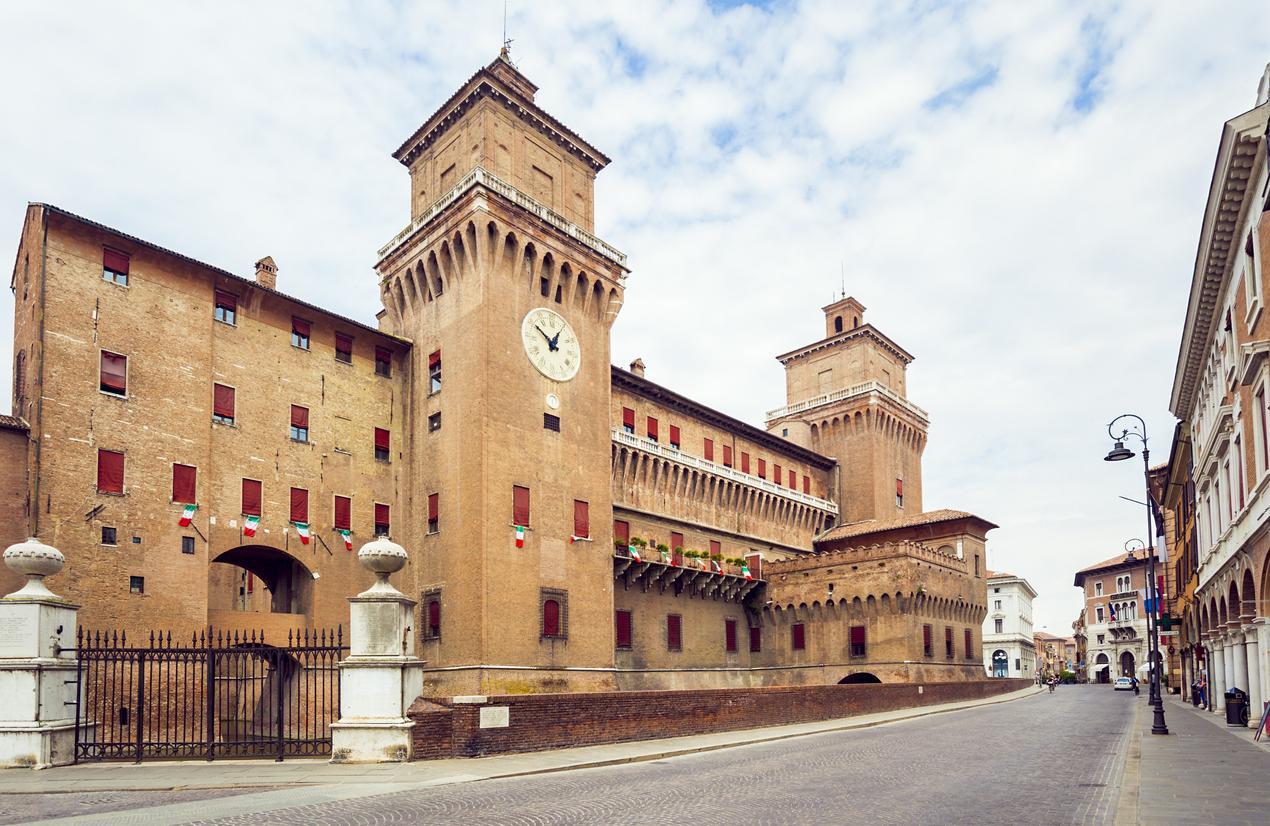
You can otherwise move from Roman times to the 14th century and visit Este Ferrara – declared a UNESCO World Heritage Site – and its Palazzo dei Diamanti, the Este Castle, the Art Gallery, the Ghetto and its Museum, the Cathedral, the Archaeological Museum and the Museum of the Risorgimento… walk along its walls, lose yourself among its many masterpieces.
The food
The Este brought several specific culinary traditions: salama da sugo, served with mashed potatoes, macaroni pie, cappellacci alla zucca, the typical bread called coppia, panpepato – made with chocolate: a luxury good at the time. The eel of Comacchio – a very evocative town full of canals – and the clams of Goro are worth mentioning.
Easter in Cesena
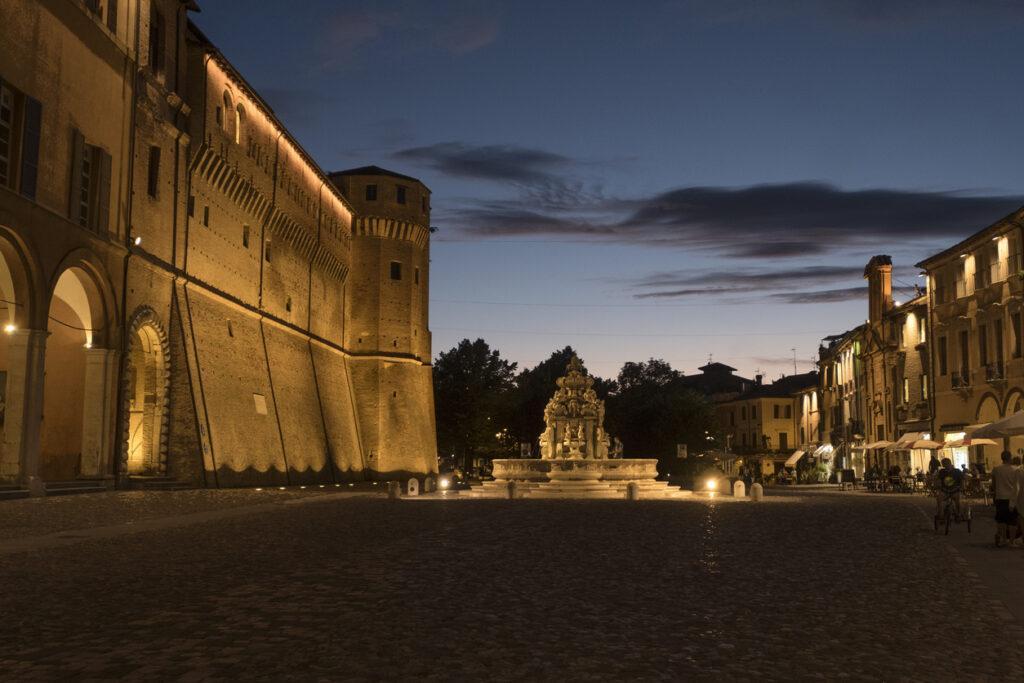
In Cesena, you can visit the Malatesta Library, built between 1447 and 1452: it is the first civic library in the entire country and the only medieval monastic library still in existence; the beautiful Malatesta Fortress is coeval. You can visit the Historical Museum of Antiquity, where you will admire ancient Cesena artefacts, ranging from the Prehistoric period to Humanism. There are also two of the most important Italian avant-garde theatre companies of the last forty years: the Teatro Valdoca, founded in 1983 by Mariangela Gualtieri (playwright and poet) and Cesare Ronconi (director), and the Societas Raffaello Sanzio, founded in 1981 in Cesena by Romeo Castellucci, Claudia Castellucci, Chiara Guidi and Paolo Guidi.
Easter in Forlì
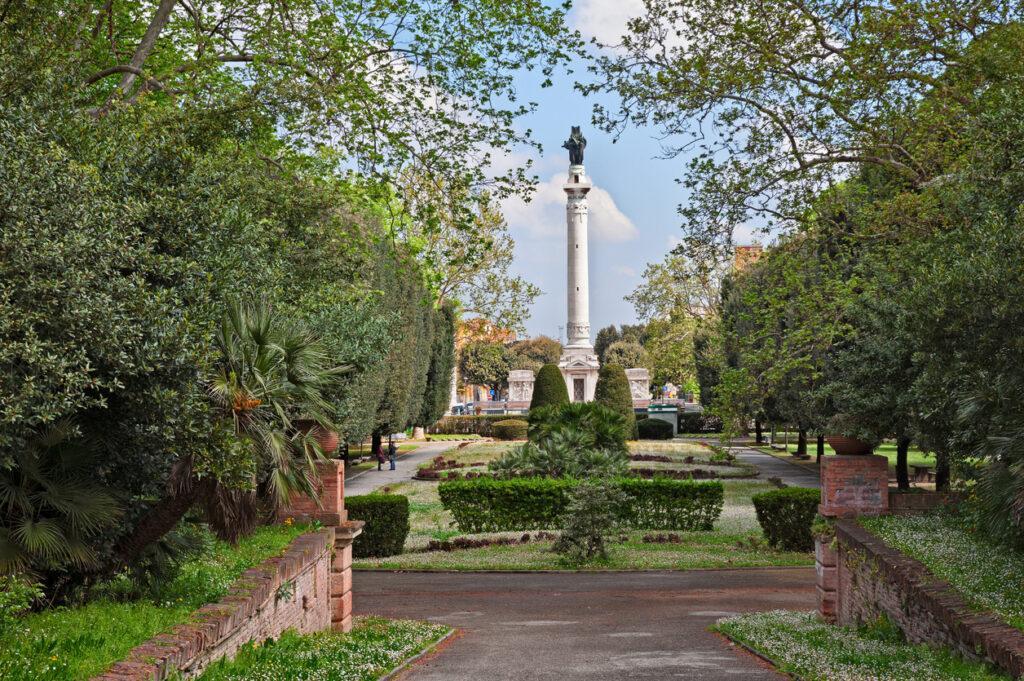
Forlì is less well known but also offers exciting works and museums. The central Piazza Saffi, one of the largest in Italy, is overlooked by the Abbey of San Mercuriale and the Palazzo Comunale. Two neighbourhoods are worthy of mention: the Rione Schiavonia, full of narrow streets and stately buildings, and the Quartiere Razionalista, with its echoes of Fascist architecture. The San Domenico Museums – where internationally renowned exhibitions take place – and Palazzo Romagnoli, which offers an interesting 20th-century collection, are worth a visit.
The food
The two cities are only 17 kilometres apart, so the cuisine is very similar. You can start with bartlaz (bartolaccio), a half-moon-shaped pastry tortello filled with mashed potatoes, bacon, aged parmesan cheese, salt and pepper. Everything is cooked on a hot sandstone slab, and you can enjoy it at the table or stroll through the village streets. Then there is the tardura, made with eggs, breadcrumbs, Parmesan cheese, salt and nutmeg. Inevitable and excellent is the piadina, just as good as the Sangiovese wine in these parts.
Easter in Piacenza
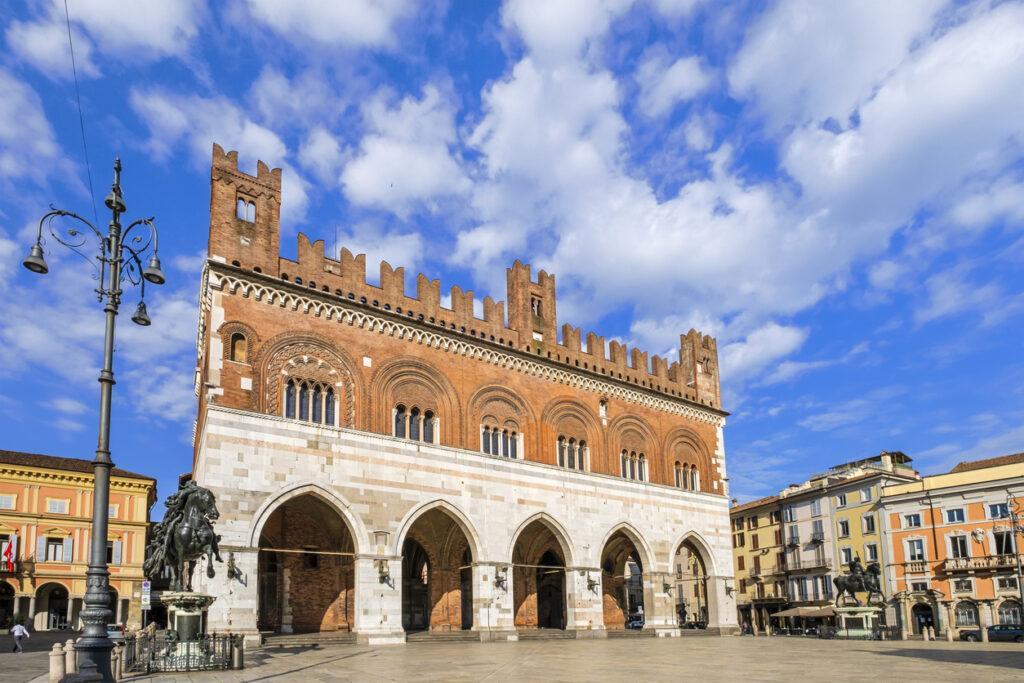
The City
I will now propose an itinerary in the far north of the region. For many people, it’s more Lombard than Emilian, a city passing through on the Via Francigena, little considered on the tourist routes. Piacenza has a beautiful historical centre enclosed within the Farnese walls of the 1500s that replaced the medieval walls.
The palaces
Within a few hundred metres, you can admire the Basilica of Santa Maria di Campagna, the Church of San Sepolcro and the Church of San Sisto.
Noteworthy is Palazzo Farnese, one of the masterpieces of 16th-century Renaissance architecture: it was commissioned by Duchess Margaret of Austria, daughter of Charles V and wife of Ottavio Farnese, after whom it was named. In Piazza Cavalli, you can admire the medieval Palazzo Gotico and, opposite, the neoclassical Palazzo del Governatore. Very close by is the Gothic Church of San Francesco. Continuing along Via XX Settembre, you will reach Piazza Duomo, where you will find the Basilica of Santa Maria Assunta and Santa Giustina, among the most important works of Romanesque architecture in Italy.
The food
In Piacenza, there are three PDO-cured types of meat (coppa, pancetta and salame); fresh stuffed egg pasta is widespread, but the typical dish is undoubtedly pisarei e fasò.
These are fresh pasta gnocchetti made with stale bread and flour, accompanied by sauce and borlotti beans. The original recipe calls for preparing the sauce with pistà ad gràss, a mixture of chopped lard from Piacenza, parsley and garlic. You can taste special tortellini (they make them with the tail) and even polenta with the horse (picula ‘d caval).
Desserts
For dessert, you can enjoy buslanein, small lemon-flavoured doughnuts, and ‘standing milk’, similar to crème caramel, prepared with three simple ingredients, milk, eggs and sugar, and then baked in the oven.
Easter in Parma
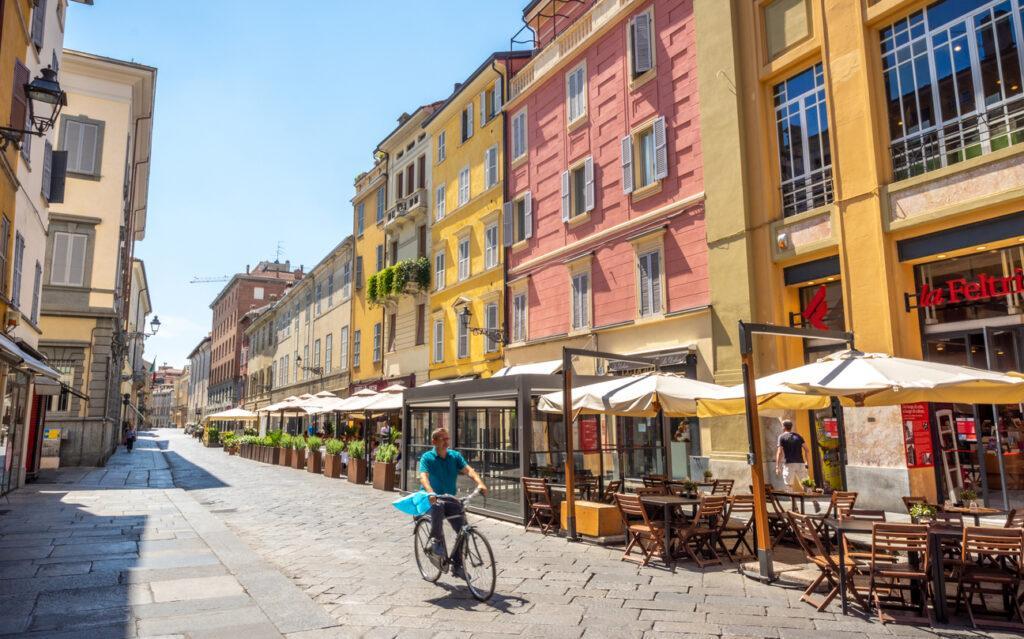
Moving southwards, I would like to point out the elegance of Parma, with its Cathedral and Baptistery – where you can see the transition from Roman to Gothic, the beautiful narrow streets in the centre, and the famous Teatro Regio, in the neoclassical style – its construction was the work of Maria Luisa, Napoleon’s wife. You can take a nice walk in Ducal Park.
The labyrinth
A few kilometres away, in Fontanellato, you can visit the largest labyrinth in the world, the Labirinto della Masone. In this province, you can taste well-known cured meats: prosciutto crudo, salame di felino, culatello di Zibello, Parmigiano reggiano, of course, a typical torta fritta, various types of tortelli and ravioli, and rice – as you head north, this cereal begins to appear.
Easter Monday in Reggio Emilia
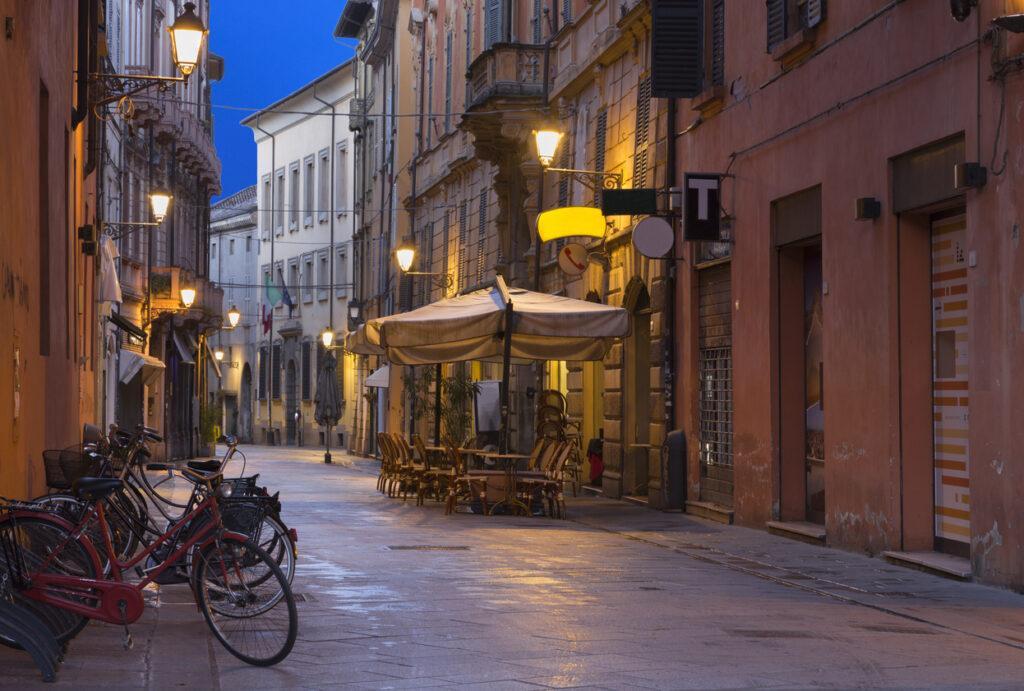
The town
Reggio Emilia has Roman origins and is known for being the city where our tricolour was born back in 1797, well before the Unification of Italy. Its historic centre is hexagonal and contains its main monuments: the neoclassical Municipal Theatre, the Renaissance Basilica of San Prospero, the sanctuary of the Beata Vergine della Ghiara, the Duomo, and the many medieval historical buildings. Architecturally interesting are the squares in the historical centre, from Piazza Prampolini to Piazza San Prospero, passing through Piazza Casotti, connected by a series of porticoed streets of Renaissance origin.
The food
Typical of Reggio is erbazzone, a savoury pie made of puff pastry filled with spinach, onion, garlic, breadcrumbs and plenty of Parmigiano Reggiano cheese. On top of the dough covering the filling are pieces of lard and pork lard, omnipresent in this region! One cannot forget caplèt – cappelletti, stuffed with pork, beef, and onion -, tortelli verdi – pasta stuffed with spinach and green chard in combination with cheese and ricotta -, pasta rasa – a mixture of hard-boiled eggs, Parmesan cheese and breadcrumbs, served in broth, and salsa verde – used to flavour boiled meat. The typical dessert is rice cake, famous thanks to the “mondine” of the early 20th century.
Easter in Modena
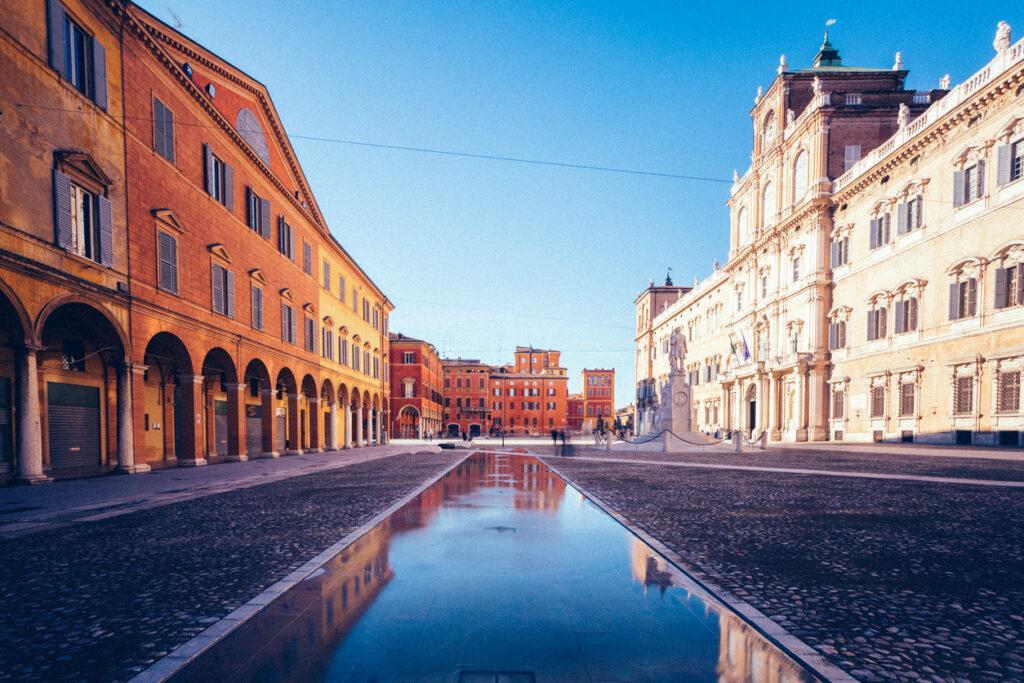
The City
In September, for more than fifteen years, the critical Festival of Philosophy has been held in Modena, featuring professors and scholars of international calibre. The city is beautiful and full of places of artistic interest; I would like to point out that Piazza Grande, the Ghirlandina Tower, a town symbol, and the Romanesque Duomo have been UNESCO sites since 1997.
Vignola and Ferrari
Vignola is worth visiting in the province of Modena, with its beautiful castle and famous duroni – some of the most prized cherries in Italy. Also worth visiting are the Ducal Palace and the Estense Museum. If you have a passion for Formula One, you can treat yourself to a visit to the Enzo Ferrari Museum! In that case, you can stretch about 20 kilometres to Maranello, where there is another Ferrari Museum!
The food
For a Modenese Easter Monday, I suggest you start with the food, which is also central to the economy and the relationship. Modena boasts IGP cotechino and the famous IGP balsamic vinegar. Also, il gnocco fritto – as the Modenese call it – and tigelle. And, of course, Lambrusco DOC, which finds here and in the province of Reggio Emilia its land of cultivation and choice.
Emilia-Romagna is a generous and hospitable land. It will know how to cradle you and welcome you with open arms!

